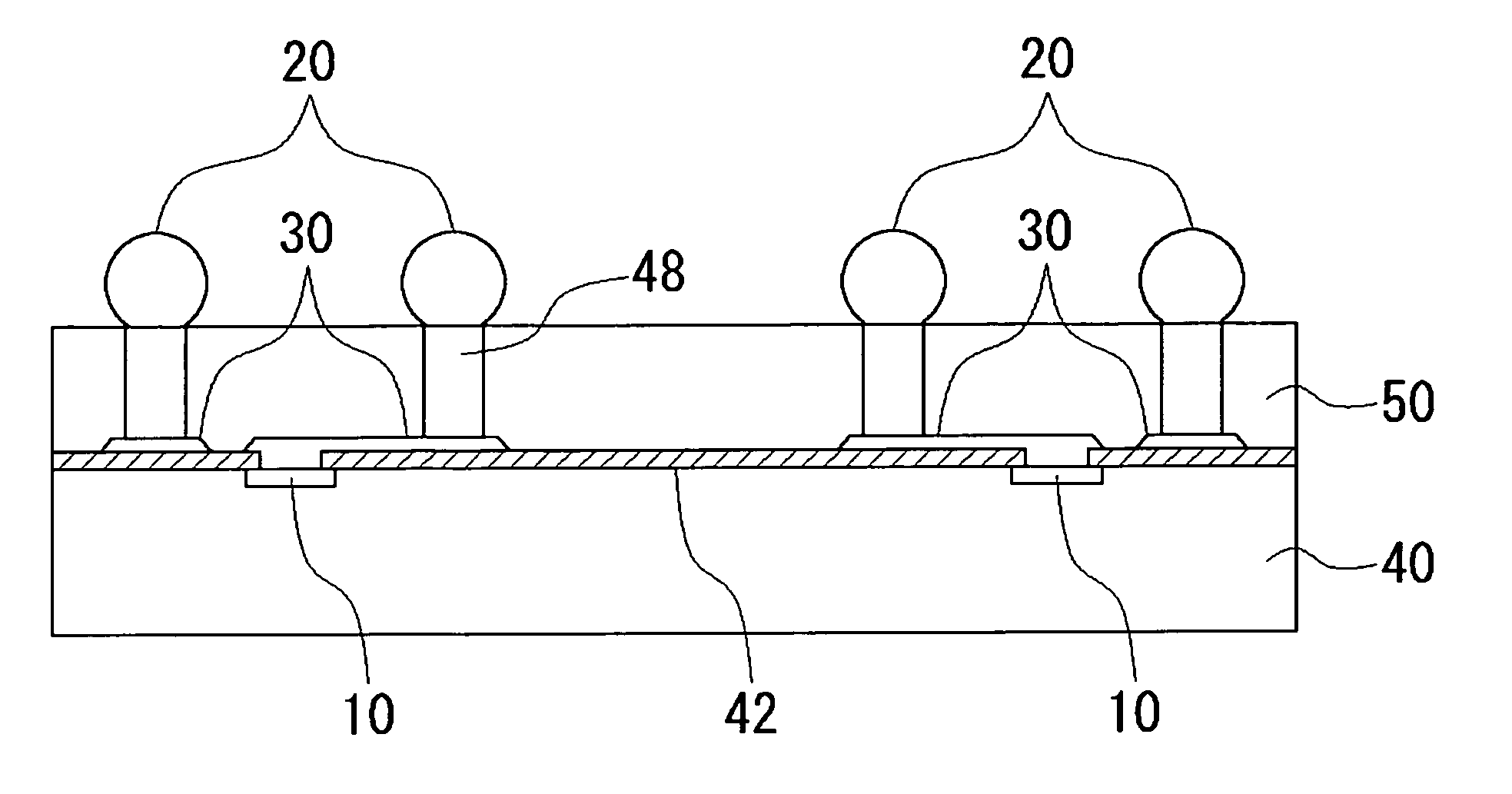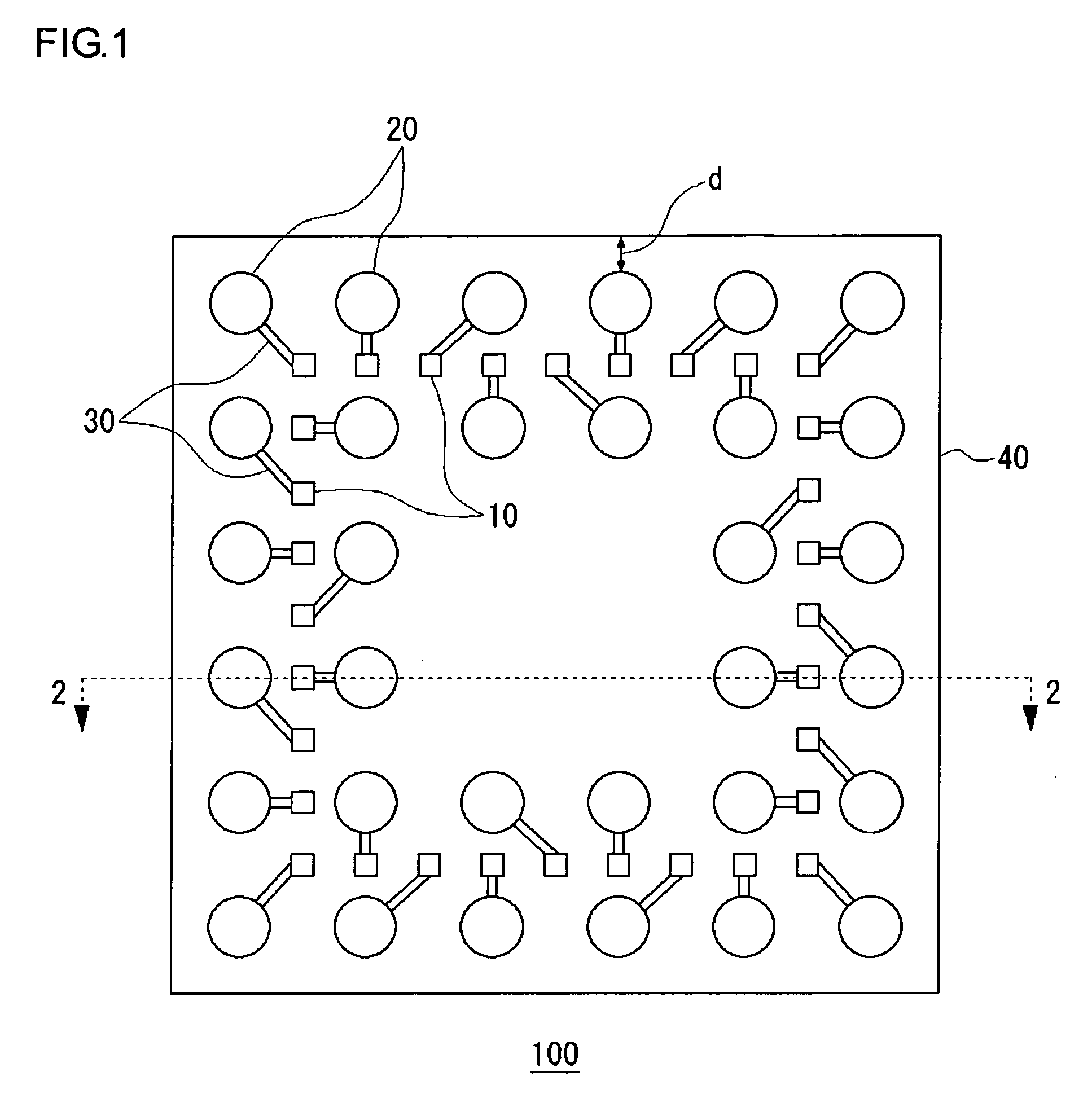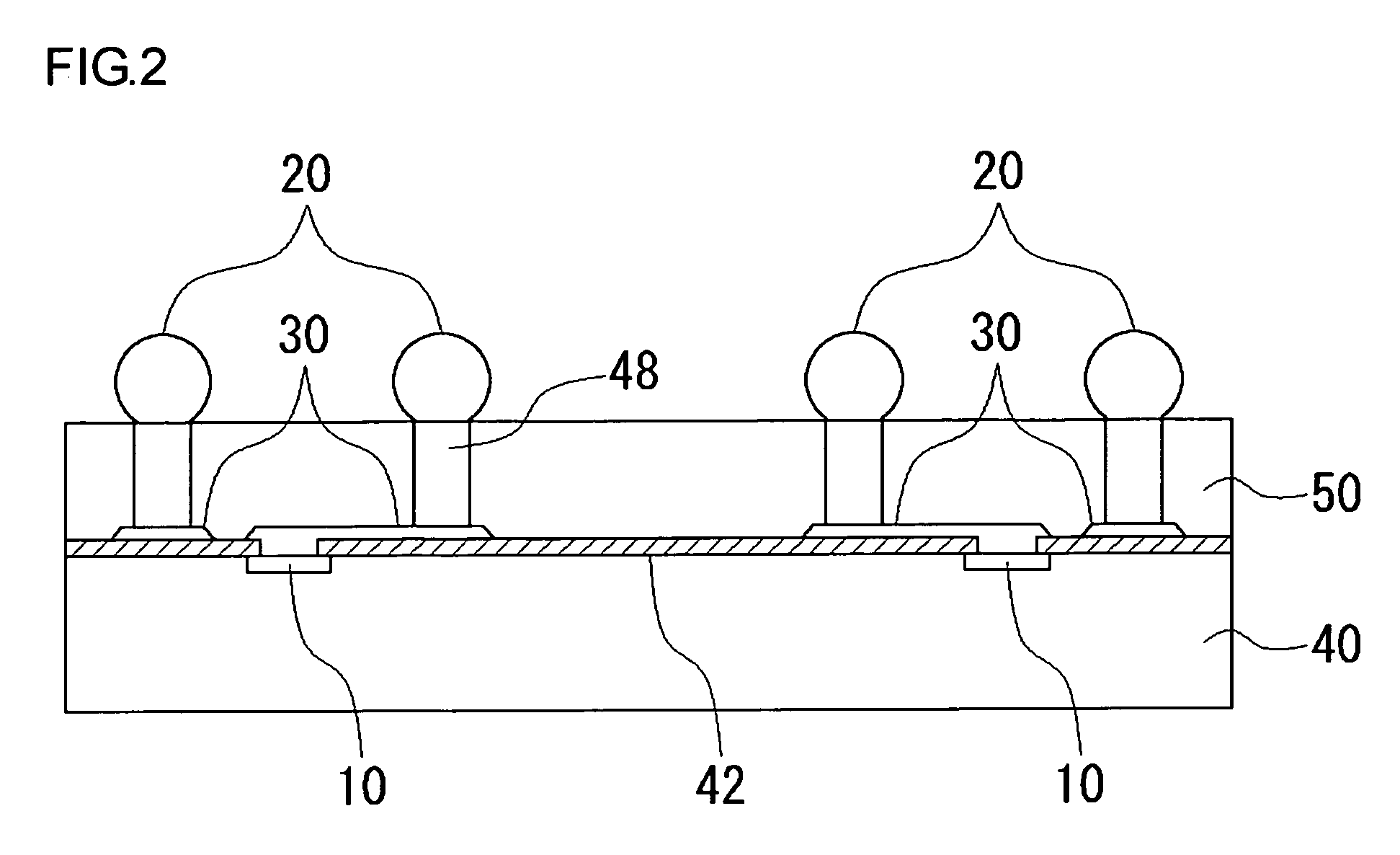Semiconductor device
a technology of semiconductor devices and electrode pads, applied in semiconductor devices, semiconductor/solid-state device details, electrical apparatus, etc., can solve the problems of increased chip size, resistance and inductance affecting circuit characteristics, and unnecessary gaps required for rewiring layout, etc., to facilitate the rewiring layout, economic effect, and efficient rewiring
- Summary
- Abstract
- Description
- Claims
- Application Information
AI Technical Summary
Benefits of technology
Problems solved by technology
Method used
Image
Examples
first embodiment
[0037]FIG. 1 is a diagram showing a semiconductor device 100 according to an embodiment of the present invention, as viewed from the electrode-pad side. The semiconductor device 100 has a CSP structure. In the diagram, the semiconductor device 100 includes: a plurality of electrode pads 10 for inputting and outputting signals from / to exterior; solder bumps 20 for making external lead electrodes; and rewiring 30.
[0038]FIG. 2 is a sectional view taken along the line 2-2 of FIG. 1. This semiconductor device 100 has the WL-CSP structure in which external connection electrodes are formed directly on its semiconductor substrate 40. The semiconductor device 100 includes the semiconductor substrate 40, a protective film 42 for passivation, the electrode pads 10, the rewiring 30, posts 48, the solder bumps 20, and a sealing resin 50. Semiconductor integrated circuits including such devices as a transistor are formed on the top of the semiconductor substrate 40, and are provided with the ele...
second embodiment
[0043] The semiconductor device 100 according to this second embodiment is characterized by that the solder bumps 20 and the rewiring 30 are arranged systematically. FIGS. 3A to 3C show part of the layout of the electrode pads 10, the solder bumps 20, and the rewiring 30 on the semiconductor device 100 according to the present embodiment.
[0044] Each of the areas shown in FIGS. 3A to 3C represents one of four areas 300a to 300d having the same shapes, corresponding to the respective sides of a rectangular, shown by the broken lines in FIG. 3D. In FIGS. 3A to 3C, both the electrode pads 10 and the solder bumps 20 are arranged at regular intervals.
[0045] In FIGS. 3A and 3B, the solder bumps 20 are arranged linearly in two parallel rows at regular intervals. The electrode pads 10 are arranged linearly in the area interposed between the two rows of solder bumps. The electrode pads 10 are spaced at approximately ½ the spacing of the solder bumps 20.
[0046] With the traces of rewiring 30...
third embodiment
[0052] The semiconductor device 100 according to a third embodiment provides a method of making effective use of the space above a semiconductor integrated circuit, appearing outside the electrode pads 10 in the first and second embodiments.
[0053]FIGS. 4A and 4B are plan views of part of the semiconductor device 100 according to the third embodiment, showing the layouts before and after packaging, respectively. As shown in FIG. 4A, before packaging, a semiconductor integrated circuit including the electrode pads 10, a functional circuit 60, and input / output circuits 70 is formed on the top of the semiconductor substrate 40. The electrode pads 10, the functional circuit 60, and the input / output circuits 70 are connected by ordinary wiring 80 inside the semiconductor integrated circuit.
[0054] The functional circuit 60 is a functional block for performing signal processing in the semiconductor integrated circuit. The functional circuit 60 varies in configuration and in area depending...
PUM
 Login to View More
Login to View More Abstract
Description
Claims
Application Information
 Login to View More
Login to View More - R&D
- Intellectual Property
- Life Sciences
- Materials
- Tech Scout
- Unparalleled Data Quality
- Higher Quality Content
- 60% Fewer Hallucinations
Browse by: Latest US Patents, China's latest patents, Technical Efficacy Thesaurus, Application Domain, Technology Topic, Popular Technical Reports.
© 2025 PatSnap. All rights reserved.Legal|Privacy policy|Modern Slavery Act Transparency Statement|Sitemap|About US| Contact US: help@patsnap.com



